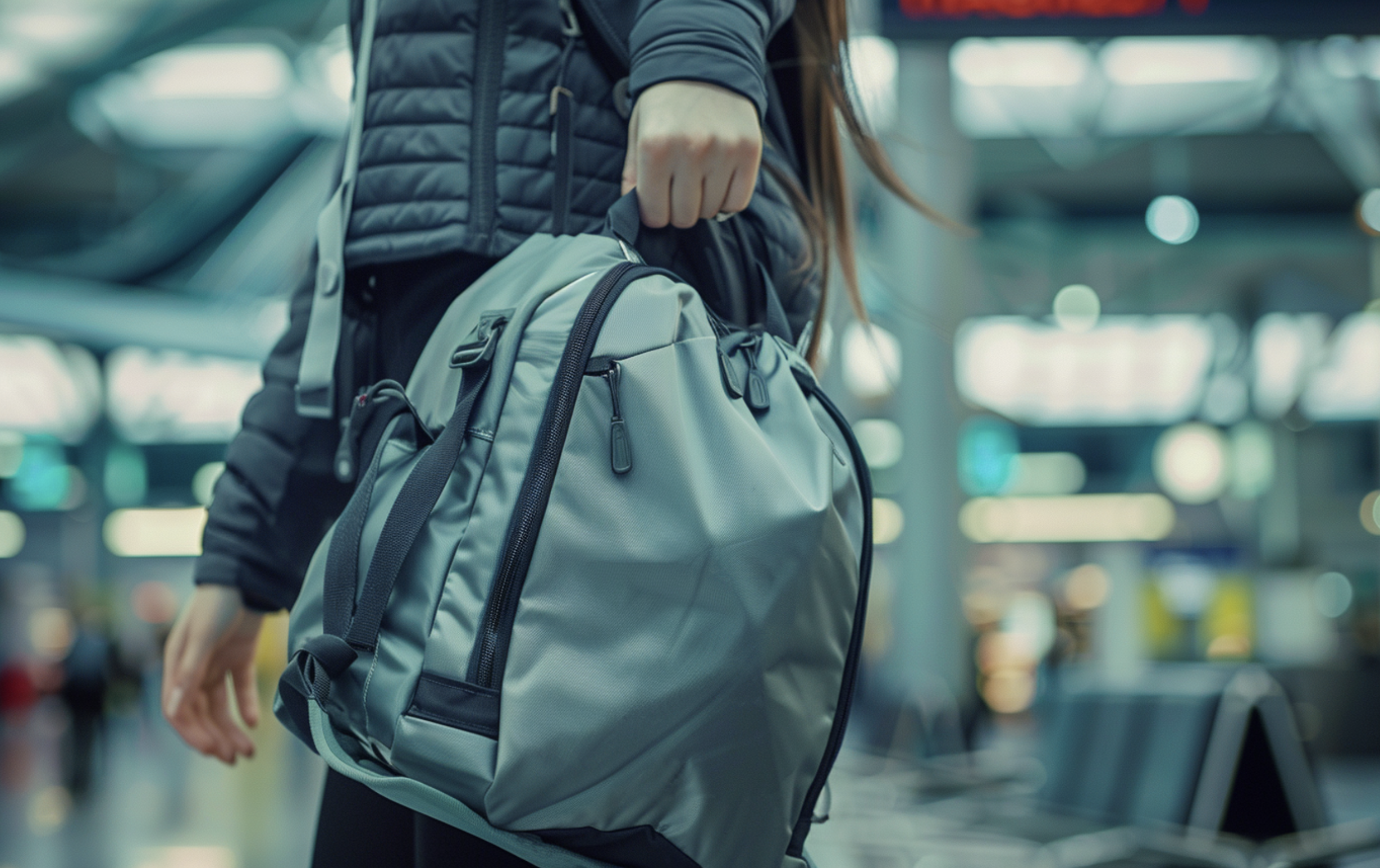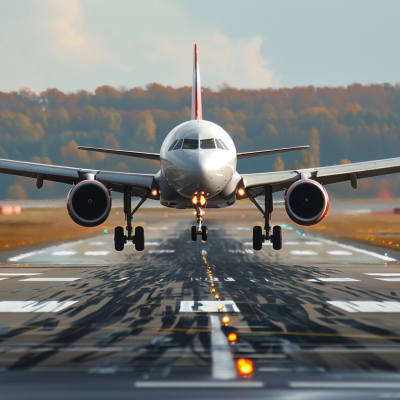Maintaining your fitness routine while traveling can be a challenge, especially when it comes to bringing supplements like creatine on a plane.
With strict TSA regulations and varying airline policies, it’s easy to feel overwhelmed and unsure about what’s allowed.
But don’t worry – with the right information and preparation, you can confidently pack your creatine and stay on track with your fitness goals.
In this guide, we’ll walk you through everything you need to know about taking creatine on a plane, from TSA guidelines to packing tips and airline-specific rules.
Whether you’re a seasoned traveler or a first-time flyer, you’ll be equipped with the knowledge and strategies to breeze through airport security and arrive at your destination with your creatine supplements safely in tow.
Navigating TSA Guidelines

The Transportation Security Administration (TSA) allows travelers to bring creatine supplements on planes, whether in carry-on or checked luggage.
However, there are specific guidelines to follow, especially when it comes to powders and liquids.
- When carrying creatine powder in your carry-on bag, it’s important to adhere to the TSA’s 12-ounce (350 ml) rule. This means that any powder-like substances, including creatine, must be in containers smaller than 12 ounces to pass through security without additional screening. If you have more than 12 ounces of creatine powder, it’s best to pack it in your checked luggage to avoid delays at security checkpoints.
- For liquid creatine supplements, the TSA’s 3-1-1 rule applies. This rule states that liquids, gels, and aerosols must be in containers no larger than 3.4 ounces (100 ml) and placed in a clear, quart-sized plastic bag. Each passenger is allowed one bag per item.
- To ensure a smooth screening process, it’s a good idea to keep your creatine supplements in their original packaging and place them in a clear plastic bag for easy inspection. If TSA officers have any questions or concerns, be prepared to explain what the supplements are and why you need them during your travels.
Flying with Creatine: Domestic and International Guidelines

Whether you’re planning a domestic flight within the United States or gearing up for international travel, bringing creatine along is feasible with some preparation.
The Transportation Security Administration (TSA) and international customs regulations set the stage for a smooth travel experience, provided you’re well-informed and prepared.
TSA Guidelines and Beyond
When traveling internationally, the rules for carrying creatine on flights departing from the U.S. apply, but entering another country introduces another layer of consideration.
Customs regulations vary by destination, and some countries may have specific restrictions or require declarations for dietary supplements:
- Customs Regulations: Before flying internationally with creatine, research the entry and customs regulations of your destination country. Official customs websites or embassies can offer guidance on necessary documentation or restrictions.
- Preparation and Documentation: Packing your creatine in its original packaging, clearly labeled, and in transparent containers, aids in smooth customs processing. Carrying a doctor’s note or prescription for your supplements can further ease the entry process.
By understanding and adhering to these guidelines, you can confidently travel with your creatine, ensuring your fitness regimen doesn’t skip a beat, no matter your destination.
Remember, the key to flying with creatine—domestically or internationally—is preparation and adherence to regulations, ensuring your journey is as smooth as your workouts.
General Airline Policies on Bringing Creatine
While the TSA sets the general guidelines for traveling with supplements like creatine, it’s important to note that individual airlines may have their own policies that could affect your travel plans.
These policies can vary from airline to airline, so it’s crucial to familiarize yourself with the specific rules of the carrier you’ll be flying with.
Some airlines may have stricter regulations on the amount of powder or liquid supplements allowed in carry-on or checked luggage.
Others might require additional screening or documentation for certain types of supplements. These policies can change over time, so it’s always best to check with your airline directly before your flight.
To ensure a smooth travel experience, visit your airline’s official website or contact their customer service to inquire about their policies on traveling with creatine.
Be prepared to provide information about the type and quantity of creatine supplements you’ll be bringing, as well as any other relevant details they may require.
When contacting your airline, consider asking the following questions:
- Are there any restrictions on the amount of creatine powder or liquid I can bring in my carry-on or checked luggage?
- Do I need to provide any additional documentation, such as a doctor’s note or prescription, to bring my creatine supplements on board?
- Are there any specific packaging requirements for creatine supplements?
By taking the time to understand your airline’s policies and preparing accordingly, you can avoid any last-minute surprises or complications at the airport.
This proactive approach will help ensure that you can travel with your creatine supplements and maintain your fitness routine throughout your journey.
Different Types of Creatine When It Comes to Air Travel

When it comes to air travel, not all forms of creatine are created equal. The type of creatine you choose to bring can significantly impact the ease and convenience of your travel experience.
Let’s compare the three main forms of creatine – powder, liquid, and capsules – and explore which ones are best suited for hassle-free air travel.
- Creatine Powder: Creatine powder is the most common form of the supplement and is widely available. However, it can be more challenging to travel with compared to other forms.
- Liquid Creatine: Liquid creatine offers a convenient, pre-mixed option for travelers. However, if the amount is smaller, then place it in a clear, quart-sized plastic bag. But if you need larger quantities, you’ll have to pack them in your checked luggage.
- Creatine Capsules: Creatine capsules are arguably the most travel-friendly option. They are compact, easy to pack, and don’t require any measuring or mixing. Additionally, capsules are not subject to the same TSA restrictions as powders and liquids, making them a convenient choice for air travel. You can pack them in your carry-on or checked luggage without worrying about additional screening or limitations.
For hassle-free air travel, creatine capsules are the best option. They offer the convenience of easy packing and the peace of mind of not having to worry about TSA restrictions.
However, if you prefer creatine powder or liquid, be sure to follow the TSA’s guidelines and pack them accordingly to minimize any potential issues during your travels.
How to Bring Creatine on A Plane

When packing your creatine for air travel, it’s essential to follow best practices to ensure a smooth journey through airport security.
Here are some detailed tips for packing creatine in both your carry-on and checked luggage:
1. Carry-on Luggage
- Keep creatine powder in its original container or a clear, resealable bag for easy inspection.
- Ensure that the container or bag holding the creatine powder is clearly labeled with the supplement’s name and any relevant information.
- If you’re bringing liquid creatine, pack it in containers no larger than 3.4 ounces (100 ml) and place them in a clear, quart-sized plastic bag, in line with the TSA’s 3-1-1 rule for liquids.
- Consider bringing a copy of your creatine supplement’s label or product information to help TSA officers quickly identify the contents.
2. Checked Luggage
- To avoid spillage, ensure your creatine powder or liquid is sealed tightly in a leak-proof container.
- Place the container inside a resealable plastic bag for added protection against leaks and spills.
- Clearly label the container with the supplement’s name and any relevant information.
- If you’re packing large quantities of creatine powder or liquid, consider dividing them into smaller containers to minimize the risk of damage or loss.
3. Proper Packaging and Labeling
- Regardless of whether you’re packing your creatine in carry-on or checked luggage, proper packaging and labeling are key to avoiding delays and ensuring a hassle-free travel experience.
- Always use transparent, resealable containers or bags that allow TSA officers to easily identify the contents.
- If you have a doctor’s note or prescription for your creatine supplements, consider bringing a copy with you to provide further clarification if needed.
By following these tips and prioritizing proper packaging and labeling, you can confidently bring your creatine supplements on a plane and maintain your fitness routine throughout your travels.
Other Common Ways to Bring Creatine on A Plane
While creatine powder, liquid, and capsules are the most common forms of the supplement, there are alternative options that can make traveling with creatine even easier.
These travel-friendly alternatives include creatine gummies and pre-mixed drinks.
1. Creatine Gummies
Creatine gummies are a convenient and tasty alternative to traditional forms of the supplement. They are compact, easy to pack, and don’t require any measuring or mixing.
Gummies are also less likely to raise suspicion or trigger additional screening at airport security, as they resemble common snacks or candy.
When packing creatine gummies, keep them in their original packaging and place them in your carry-on or checked luggage as desired.
Benefits of Creatine Gummies for Air Travel
- No measuring or mixing required
- Compact and easy to pack
- Less likely to raise suspicion at security checkpoints
- Not subject to the same TSA restrictions as powders and liquids
2. Pre-Mixed Creatine Drinks
Pre-mixed creatine drinks offer a ready-to-drink option that eliminates the need for measuring, mixing, or packing separate containers. These drinks come in sealed bottles or cans, making them convenient for air travel. However, keep in mind that pre-mixed drinks are subject to the TSA’s 3-1-1 rule for liquids when packed in carry-on luggage. If you need larger quantities, pack them in your checked luggage.
Benefits of Pre-Mixed Creatine Drinks for Air Travel
- No measuring or mixing required
- Ready-to-drink convenience
- Sealed bottles or cans for easy packing
- Can be packed in checked luggage without restrictions
By considering these travel-friendly alternatives, you can simplify the process of bringing creatine on a plane and maintain your supplement routine without the hassle of dealing with powders or liquids.
Choose the option that best suits your needs and preferences, and always adhere to TSA guidelines and airline regulations to ensure a smooth travel experience.
Do’s & Don’ts of Taking Creatine on Flights

To ensure a smooth and stress-free travel experience when flying with creatine, it’s essential to be aware of the do’s and don’ts.
Here are some critical recommendations to follow and common mistakes to avoid:
| Do’s | Don’ts |
|---|---|
|
|
|
|
|
|
|
|
|
|
|
|
Practical Advice for a Smooth Travel Experience
- Plan ahead and give yourself plenty of time at the airport to accommodate any additional screening or questioning.
- Consider using travel-friendly alternatives like creatine gummies or capsules to minimize the hassle of packing powders or liquids.
- If you’re traveling for an extended period, research if you can purchase creatine at your destination to avoid packing large quantities.
- Always prioritize clear communication and transparency when discussing your creatine supplements with TSA officers or airline staff.
By following these do’s and don’ts and keeping the practical advice in mind, you can confidently travel with your creatine supplements and focus on enjoying your trip without worrying about potential issues at the airport.
Conclusion
Last but not least, traveling with creatine is easier than you might think.
By understanding the TSA guidelines, airline policies, and best practices for packing your supplements, you can ensure a smooth and stress-free journey.
Whether you choose to bring creatine powder, capsules, or travel-friendly alternatives like gummies or pre-mixed drinks, the key is to be prepared and transparent.
Always keep your creatine in clearly labeled, sealed containers, and be ready to explain their purpose if needed.
With a little planning and adherence to the do’s and don’ts of air travel, you can confidently bring your creatine on board and maintain your fitness routine, no matter where your adventures take you.
So pack your bags, grab your creatine, and get ready to embark on your next exciting journey!






